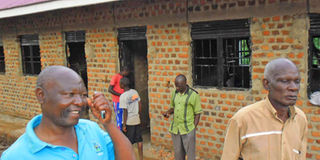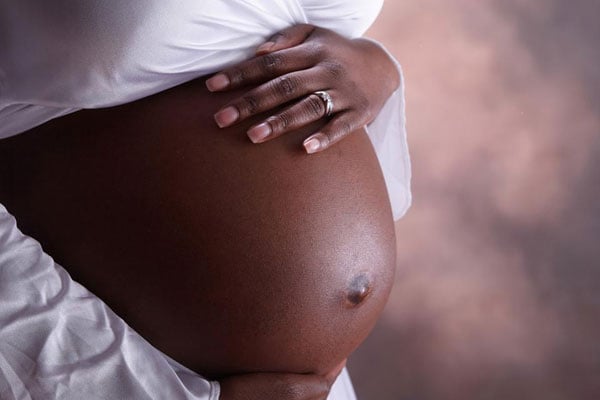Buikwe attains 75 per cent completion rate in schools

Inspection. Local leaders supervise ongoing construction works at Kagombe Superior Primary School, Buikwe District on Monday. PHOTO BY DENNIS SSEBWAMI
What you need to know:
- Improvement. The district’s school dropout rate has reduced from 40 per cent in 2015 to 34 per cent in 2017.
Buikwe.
A new survey conducted by Buikwe District leaders has shown significant progress in completion rate in primary schools in the area.
The latest statistics indicate that although the completion rate of pupils stood at 40 per cent by 2011, it increased to 75.5 per cent in 2017.
According to the survey, failure in Primary Leaving Examination that was ranging between 10 per cent and 20 per cent since 2015, reduced to 15.9 per cent last year, while the intake increased to 47.2 per cent, down from 39.9 per cent in 2015 .
The district’s school dropout rate, has also reduced from 40 per cent in 2015 to 34 per cent in 2017.
The district chairperson, Mr Mathias Kigongo, partly attributes the progress in both intake and completion rates to various interventions by the district.
“We have improved the learning environment in many of our schools and pupils no longer study under trees as it was three years ago. We wouldn’t have achieved this if we didn’t get joint support from government and other partners from Iceland,” he said during an interview on Tuesday.
Financial support
Buikwe is among the districts where the government of Iceland, through the Icelandic International Development Agency (ICEIDA), has been offering financial support to uplift people’s standards of living through education, health and provision of safe and clean water.
According to Mr Kigongo, ICEIDA has in the last three years injected Shs34.3b in the district’s education sector where 28 primary and four secondary schools, especially in the sub-counties of Najja, Ngogwe, Nyenga and Ssi-Bukunja along Lake Victoria shores, have built new classroom blocks and staff houses .
“As a district, we had no funds to improve infrastructure in many of our schools. But with support from Iceland, we have moved a step ahead,” he said.
At individual school level, Njenga Secondary School which had a student population of 1,121 three years ago, now has 1,402 students, indicating an additional enrolment of 281 learners.
Kagombe Superior Primary School now has a population of 803 pupils compared to 608 in 2015.
Mr Julius Kizito Musasizi, the Buikwe District education officer said, after renovating and constructing new classrooms and staff houses at various schools, many parents now want to associate with schools .
“For the first time, we are now seeing an increase in parents’ participation in school activities. At Nyenga Secondary School, parents are providing meals for their children and are eager to know what takes place at the school,” he said.
Improvement in grades
Due to the strategic interventions made, Mr Musasizi said schools like Nkombwe Primary School in Ngogwe Sub-county which has been performing poorly in PLE since the inception in 1989, managed to get two first grades last year.
Mr David Golooba, a member on Nkombwe Primary School’s management committee, said the school was started as a community project after realising that children are losing a chance to attain education.
“We later resolved, as a community, to hand over the school to the government since we lacked money to pay teachers. We are grateful to see new classrooms, pit-latrines, a kitchen, staff houses built and two old buildings given a face-lift,” he said.
Rev Fr Anthony Balagira, the head teacher of Sacred Heart SS said besides the new classroom blocks and staff houses, they have also received text books and sports equipment .
“We are seeing remarkable improvement in both academics and sports. We greatly thank the district and the government of Iceland for extending this support to us,” he said.




